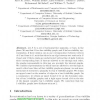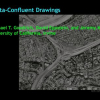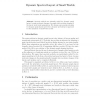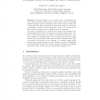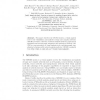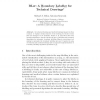GD
2005
Springer
14 years 5 months ago
2005
Springer
Force-directed placement is a widely used approach to automatically arranging the nodes and edges of a relational diagram or graph in an aesthetically pleasing manner. The adoption...
GD
2005
Springer
14 years 5 months ago
2005
Springer
Let S be a set of horizontal line segments, or bars, in the plane. We say that G is a bar visibility graph, and S its bar visibility representation, if there exists a one-to-one co...
GD
2005
Springer
14 years 5 months ago
2005
Springer
GD
2005
Springer
14 years 5 months ago
2005
Springer
GD
2005
Springer
14 years 5 months ago
2005
Springer
GD
2005
Springer
14 years 5 months ago
2005
Springer
Spectral methods are naturally suited for dynamic graph layout, because moderate changes of a graph yield moderate changes of the layout under weak assumptions. We discuss some gen...
GD
2005
Springer
14 years 5 months ago
2005
Springer
Clustered graph is a very useful model for drawing large and complex networks. This paper presents a new method for drawing clustered graphs in three dimensions. The method uses a ...
GD
2005
Springer
14 years 5 months ago
2005
Springer
This paper describes the GEOMI system, a visual analysis tool for the visualisation and analysis of large and complex networks. GEOMI provides a collection of network analysis meth...
GD
2005
Springer
14 years 5 months ago
2005
Springer
Visualizing and analyzing social networks is a challenging problem that has been receiving growing attention. An important first step, before analysis can begin, is ensuring that...
GD
2005
Springer
14 years 5 months ago
2005
Springer
In technical drawings and medical drawings/maps it is often common to explain certain features of the drawing by blocks of text that are arranged on its boundary. Bekos et. al. int...

